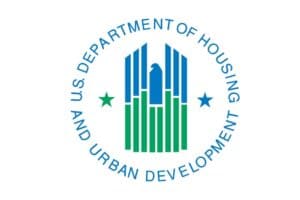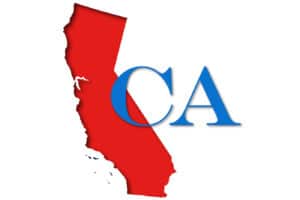General News

Obama’s FY 2015 Budget Requests $46.7 Billion for HUD Programs
On March 4, President Barack Obama introduced his fiscal year (FY) 2015 budget, requesting a total of $46.7 billion for Department of Housing and Urban Development (HUD) programs, as well as significant policy proposals aimed at improving the Low-Income Housing Tax Credit (LIHTC) program and a proposal to modify and permanently extend the New Markets Tax Credit.

HUD Revises TPV Funding Eligibility Criteria for Certain Properties
HUD recently issued Notice PIH 2014-04 amending the eligibility criteria for certain types of properties applying to receive Tenant Protection Vouchers (TPVs), as defined in a previous HUD Notice PIH 2013-08. Under category 3 of Notice PIH 2013-08, HUD stipulated that TPVs may be made available to provide housing choice voucher rental assistance to residents residing in low-vacancy areas if tenants are paying rents greater than 30 percent of household income as a result of the expiration of affordability restrictions accompanying a mortgage or preservation program administered by HUD. However, the Notice stipulated that the project could not have a Section 202 Direct Loan, FHA-insured primary mortgage or HUD-held primary mortgage in place at the time of the Owner’s application for the funding.

NH&RA Forms RAD Users Group to Share Issues and Ideas with HUD
A new initiative for members involved with the U.S. Department of Housing and Urban Development’s Rental Assistance Demonstration (RAD) was announced at NH&RA’s recent Annual Meeting. At the request of HUD, NH&RA has formed a new working group for RAD users to meet with HUD on a regular basis to discuss challenges and share ideas for improvements to the program. At a kick off session featuring Margaret Salazar, Director of HUD’s Office of Affordable Housing Preservation, was held in conjunction with last week’s NH&RA Annual Meeting. NH&RA members identified the following tips for developers and houing authorities pursuing RAD transactions…

HUD Releases 2014 Annual Adjustment Factors for Section 8 HAP Contracts
HUD has published a notice in the Federal Register announcing the FY-2014 Annual Adjustment Factors (AFF) for adjustment of contract rents for units assisted in certain Section 8 housing assistance payment programs. AAFs are used to calculate rent changes when Section 8 contracts are renewed. Each Section 8 program category uses the AAFs differently and AAFs are not used in determining renewal rents (with the exception of the Project-Based Certificate program), budget-based rents, or for the Tenant-Based Certificate program. AFFs are based on a formula using residential rent and utility cost changes from the Labor Bureau’s most recent Consumer Price Index (CPI) survey.

HUD Issues Update on Current Status of RAD First Component and “Waitlist” Policies
HUD recently issued a revised final implementation of the Rental Assistance Demonstration (RAD) program guidance to clarify how RAD transactions will be handled moving forward in light of the 60,000 unit cap for RAD not being increased in the fiscal year (FY) 2014 appropriations package.

HUD Releases Updated E-Application for Section 236 Prepayments
HUD’s Office of Affordable Housing Preservation (OAHP) recently announced the launch of an updated version of its Section 236 consolidated e-Application tool at www.hudmfpreservation.net, as a part of its goal to move towards centralized processing of Section 236 prepayments and preservation transactions.

Harvard Joint Center for Housing Studies Releases New Report at Washington Event
On December 9, 2013, the Joint Center for Housing Studies of Harvard University (JCHS) released a new report on U.S. renters and rental housing characteristics, conditions, and trends during an event at the Newseum in Washington, D.C. The report, America’s Rental Housing: Evolving Markets and Trends, describes how the 2008 recession has impacted rental housing trends. Currently, there are 43 million rental households, representing 35% of Americans — the highest rate in more than a decade. Additionally, a disproportionate amount of lower-income families and individuals living in rental housing pay an excessive share of their income towards rent. Because of the vast changes in housing, many consider America to be experiencing the worst crisis today in renter affordability.

HUD Previews New Energy Efficiency Incentives for Affordable Housing Owners
On December 3, 2013 HUD previewed to NH&RA a series of new incentives and policy flexibility for owners of multifamily affordable housing properties that commit to making portfolio wide energy efficiency commitments through the Administration’s Better Buildings Challenge. HUD has developed these incentives to address the market and policy barriers that owners experience in greening their properties. The underlying policy will be issued in a separate and forthcoming Implementation Memo, to be released in FY-2014.

Congressional Tax Reform Proposal Creates Major Changes to LIHTC, HTC, & Energy Tax Credits
On Wednesday February 26, House Ways & Means Committee Chairman Dave Camp (R-Mich.) released his long-awaited draft Tax Reform Act of 2014. The draft legislation contains many significant provisions relating to the Low-Income Housing Tax Credit and would also repeal the Historic Rehabilitation Tax Credit and various renewable energy credits.

NH&RA Announces Pennsylvania “Preservation Through Energy Efficiency” Event, a Major Energy Efficiency Initiative Supported by the MacArthur Foundation
WASHINGTON, DC ““Â National Housing & Rehabilitation Association (“NH&RA”) will convene its first Preservation Through Energy Efficiency Road Show (“Road Show”) on April 3 at the Hub Cira Centre in downtown Philadelphia, PA….

2014 California QAP: Final Version Available
Last week, California Tax Credit Allocation Committee (TCAC) released the final proposed changes to the 2014 California Qualified Allocation Plan (QAP).

CDFI Fund Seeks Comments on Allocation Application
Community Development Financial Institutions Fund (CDFI Fund) released a notice in the Federal Register soliciting comments concerning the New Markets Tax Credit (NMTC) Program Allocation Application.